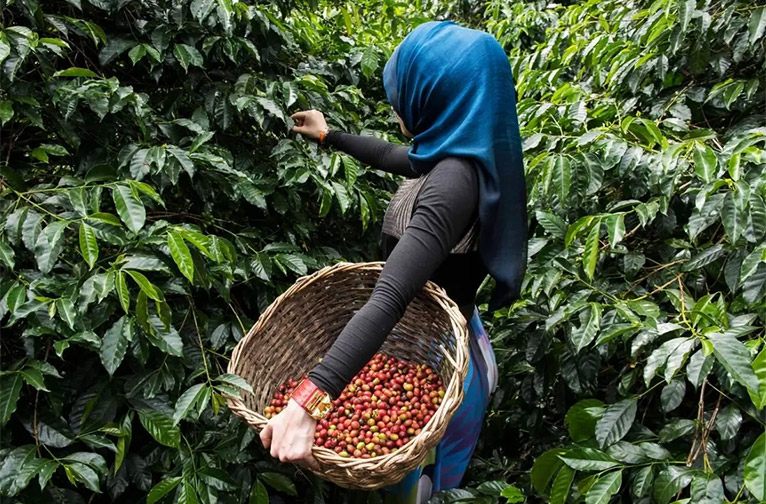Spring and fall are ideal plantings times for good reason—daytime temperatures are milder, rains are plentiful, and nights are typically cooler. Summer temperatures and intense sunlight place excess stress on plants. Under these conditions, plants lose water quickly which increases the risk of desiccation of plant tissues. Water is often less available during the summer as well, further compounding the issue. While it is possible to plant some species in the heat of summer, other plants are unlikely to survive due to their physiology or mode of production.
When planning to purchase and install new plants, it helps to understand the proper planting time based on how plants are produced and packaged at the nursery. Plants are grown and sold using one of three common methods: container grown, bare root, or balled and burlapped. Container plants are grown and sold in containers. These tend to be more adaptable when it comes to planting time and include many trees and shrubs as well as annuals, perennials, vegetables, and ornamental grasses.
Bare root plants are dug from the ground when they are dormant and sold without soil on their roots. They should be handled carefully and planted during late winter or early spring while still in the dormant state. Roses, shrubs, strawberries, and many fruiting trees and shrubs are commonly available as bare root plants.
Finally, larger trees and shrubs may be sold as balled and burlapped or B&B plants. These are dug with a large ball of soil around the roots. Spring and fall are ideal times to plant B&B plants, though with extra care, they can be successfully installed in the summer months.
Another group of plants to pay careful attention to are annuals and perennials adapted to growing in cooler weather. These include both ornamental plants as well as herbs and vegetables. Annuals in this groups are typically referred to as cool-season annuals and are planted either in fall or late winter for growth during fall and spring. Some perennials are also better adapted to cool weather and should not be planted in the heat of summer. It is also best to avoid dividing and transplanting perennials and other plants during the summer months due to the unnecessary stress.
The following plants are unlikely to survive or thrive when planted in the summer. You’ll save time, money, and stress by waiting to plant these at a more ideal time.
1 Columbine
- Botanical Name: Aquilegia canadensis
- Sun Exposure: Full Sun to Part Shade
- Soil Type: Medium Moisture, Well-draining, Average Fertility
- Soil pH: Mildly Acidic to Slightly Alkaline (6.0-8.0)
- USDA Hardiness Zones: 3 to 9
This gorgeous perennial supports hummingbirds during their spring migrations with an abundance of uniquely shaped blooms. Columbine thrives in shady gardens and woodland plantings. They prefer and thrive under cooler temperatures and some varieties may go dormant during the heat of summer. While summer planting is a not advised, it is a good time to scatter seeds produced by established plants, as these will not sprout until the time is right.
2 Bare Root Peach
- Botanical Name: Prunus persica
- Sun Exposure: Full Sun
- Soil Type: Moist, Well-draining, Rich
- Soil pH: Slightly Acidic to Neutral (6.0-7.0)
- USDA Hardiness Zones: 5 to 9
Peaches make a lovely addition to the landscape with their gorgeous blooms and tasty fruit. Like many fruit trees, peaches are commonly sold bare root. Bare root fruit trees experience less stress from transplanting, making them more successful for home gardeners. Nurseries dig and prepare bare root plants when they are dormant and sell them to homeowners in the dormant state in late fall or early spring. They should be planted right away upon purchase.
3 Calendula
- Botanical Name: Calendula officinalis
- Sun Exposure: Full Sun
- Soil Type: Medium Moisture, Well-draining, Rich
- Soil pH: Slightly Acidic to Neutral (6.0-7.0)
- USDA Hardiness Zones: Annual
Calendula, or pot marigold, is a cool season annual commonly grown as a winter annual in the South. Plants are cold hardy, but do not stand up to heat and often die back during the summer. Calendula is often grown from seed, which is best sown in early fall for colorful blooms during the colder months of the year.
4 Peas
- Botanical Name: Pisum sativum
- Sun Exposure: Full Sun
- Soil Type: Moist, Well-draining, Average Fertility
- Soil pH: Slightly Acidic to Neutral (6.0-7.5)
- USDA Hardiness Zones: Annual
Peas are easy to grow but have a small window of productivity in the garden. The plants thrive under cool temperatures and stop growing when temperatures reach 85°F. As such, peas are easiest to grow as a spring crop. Sow seeds as soon as the soil thaws in late winter, or in January in areas that do not experience freezes. Vining varieties produce over a longer period of time and are preferred for the home garden, though a small trellis or other support is required.
5 Polyanthus Primrose
- Botanical Name: Primula x polyantha
- Sun Exposure: Part Shade
- Soil Type: Moist, Well-draining, Rich
- Soil pH: Acidic (5.5-6.5)
- USDA Hardiness Zones: 3 to 8
Some garden plants also make popular houseplants. With their colorful, long-lasting blooms, polyanthus primroses are some of the earliest flowering plants in the garden and provide weeks of winter flowers indoors. The plants are remarkably frost-tolerant and are technically perennial but commonly grown as winter annuals in the South. They often go dormant during the summer when planted outdoors.


